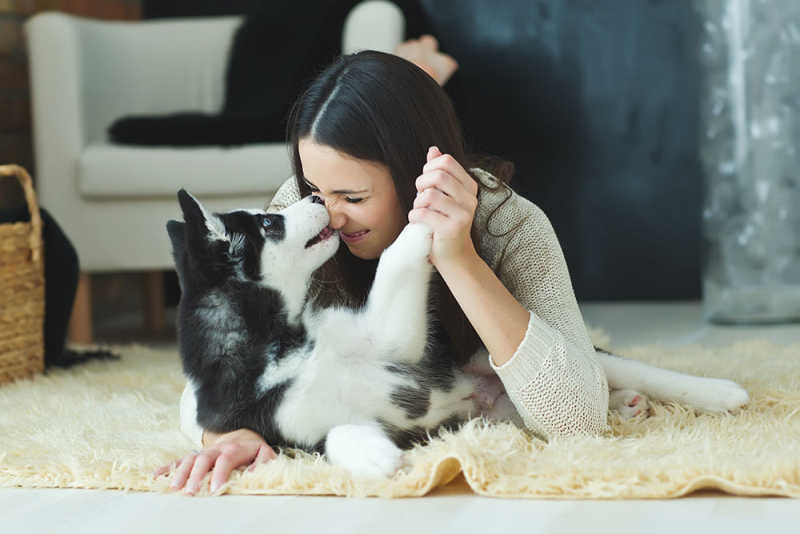Almost every dog loves going for a walk. Don’t forget that most breeds are originally meant to be working / hunting / migrating 4-12 hours a day – but in reality no one can walk their dog for that length of time. Your Pug will probably be ok with this, but your Boarder Collie or Cocker Spaniel may not.
There also times when you can’t walk your dog at all. After an operation, before their vaccinations, if the weather outside is too treacherous etc.
Having tools and strategies to entertain your dog indoors is vital for having a happy and fulfilled dog. These should never replace the walk permanently, but they are a great addition to help relax a high-energy dog, and absolute gold dust for when you can’t walk your dog at all. Most also have the added bonus of requiring very minimal effort from you, meaning you’ll be more inclined to keep good habits and use them.
Slow Feeding Bowls
Slow feeding bowls are a great way to occupy your dog, and slow down the rate at which they eat as well (I’m sure all the Labrador and Pug owners reading this know exactly what we are referring to). The food falls into a plastic maze, making it harder (and therefore taking longer) for your dog to eat. These are very inexpensive (less than £10 from all good retailers) and should be the way we all feed our dogs.
Eating too fast is not great for your dog’s health, so as well as occupying them and helping them expel more energy, these bowls also help their health.
Frozen Vegetables
A frozen carrot, broccoli or cauliflower should be in your freezer at all times, for those moments when you need to keep your dog occupied. Being frozen it will take a while for your dog to eat, and being vegetables, they don’t really add to your dog’s calorie intake for the day (it takes a lot of carrot to put on weight!).
Frozen vegetables are also great for teething puppies (they take the energy of the puppy, and the frozen vegetable helps numb the gums) and any dog on a hot day.
Training
Think of your house like your dog’s library when it comes to training. There are far fewer distractions in the house – as soon as he/she is outside so much stimuli hit their senses, making it harder to train. In the house is where your dog will learn any new word, or reinforce a word they already know.
Anything you want to train your dog to do outside begins with training in the home. If you’re unsure how to train your dog in the house for a behavior you need outside, talk to a behaviorist to get some handy training exercises.
Training is also tiring for a dog – any form of study is for dogs and humans alike. So training at home will also help get some of the energy out of your dog.
Puzzle Toys
There is an endless number of puzzle toys available with one simple internet search, ranging in complexity, and also how much involvement is required by you.
Some can be put in a freezer with food inside. Some you can place in front of your dog and leave them to it. Some will need you to show your dog how to solve before they can do it themselves.
Dogs are very smart animals, and with puzzle toys you can help your dog use and expand their intelligence through harnessing their problem-solving skills.
Treadmill
Believe it or not your dog can be trained to use a treadmill. This should always be done initially by an experienced behaviorist, and even when trained your dog should only ever use it with human supervision.
The treadmill should also never permanently replace the walk, but it is a great way to get your dog to do a few extra miles after your walk if you need to get home and work, or if you can’t get the out the house for any reason.

